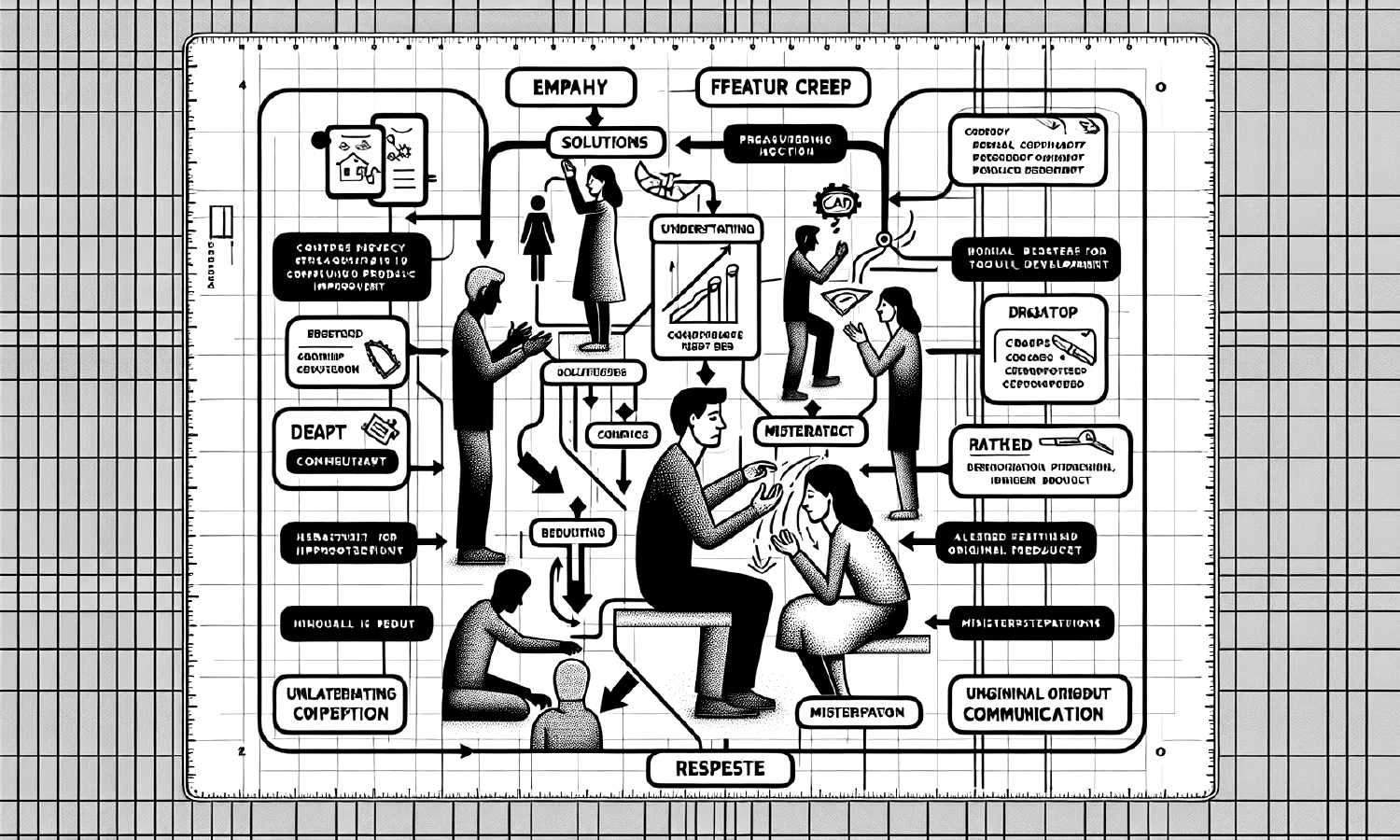Feature creep: when you code for you, not for them.

TL;DR
It happens when you release so many changes that customers forget what the product is and stop liking it.
This happens because of bad communication with customers, moving too fast with updates, and not talking clearly inside the team.
How does it start?
In tech, this is a very common story:
Customers talk to sales, who report to the product owner, probaly follow-up with the customer as well and finally relays information to the manager or developer.
But when the feature goes live, everyone points fingers, saying, “Oh, but that’s what it meant?”
Then, depending on your culture, it goes one of three ways: Bloodbath, Sadness, Adaptation
Conflicts are to be expected, and that’s better than silence.
If they don’t like your feature, at least they are telling you.
And that’s a good thing. I know so many products or even corporation where if you send a feedback form you will get rejected like an paper ad in your mailbox.
The key is how to react.
If you take the habit of just going back to shipping new features then you’ve just lost the negotiation.
The Root of Mistrust
You’re going too fast.
Take the time to build a real relationship that goes beyond your logo.
In sales, there’s a concept where you can ruin a sale by closing too fast.
Take the time to listen.
But how do you listen to user behavior at scale?
Metrics Used to Keep the Conversation Alive with Your Customers
To maintain an ongoing conversation with your customers and ensure trust, here are key metrics you can track:
Net Promoter Score (NPS): Measures how likely customers are to recommend your product. A declining NPS can signal trust issues.
Customer Retention Rate: Example: Check that you are not having ghosts in your database. I have a story of a friend who took charge of a huge app with 100,000 users—but none were active.
He sent a marketing campaign, and everyone churned. They had just forgotten they signed up for the product. Scary.
Feature Adoption Rate: Shows how frequently new features are used. Track database record changes and clicks.
Churn Rate: Tracks people canceling subscriptions. This can be more insidious because it might happen due to the time of year, a mistake from two months ago, or poor support.
Even if you add a modal to get feedback at critical moments, like just before canceling, people will still trick you by putting whatever as a sign of rebellion. I cannot emphasize this enough: feature creep is a symptom of weak conversation—both externally and internally.
If you have enought traffic: A/B test the metrics by showing the new feature to a set of people. (works for pricing also…)
Empathetic Product Development: Solving Real Problems
The key to regaining and building trust with customers lies in deeply understanding their real problems and focusing on straightforward solutions.
You need to learn to talk in a very specific way—read The Mom Test to understand what I mean.
Basically, people counterfeit you by default, but you can craft sentences that make it easier for them to tell the truth. Generally, people feel more heard when they can do so.
In a nutshell: talk to them, build a simple implementation, see their reaction, and understand what they can’t put into words. Cross-check with metrics.
@NOTE: This is why it’s important to have a list of 5-10 true believers that you can call to demo stuff. And if you want to have that, you need to befriend them and not lose their trust. Silence is the worst confirmation ever—and the most real one.
Conclusion: Empathy and Engagement
Feature creep is not a technical problem but a human one. At its root, it happens when you add too many features, and then no one uses the product—or worse, they leave.
If I could translate that into an image, it would be the equivalent of a husband trying to respond to every objection of his wife with a solution—without understanding that she just needs a break from life, not a “Mr. Fix-It.”